营改增”对交通运输业税收负担变化研究
VIP免费
摘 要
“结构性减税”在 2008 年的中央经济工作会议中被首次提出,营业税改征增
值税(后称“营改增”)作为“结构性减税”的重要举措之一,2012 年1月1日在
上海市交通运输业和部分现代服务业率先实施,截至 2013 年8月,交通运输业实
行“营改增”的地区已经扩展到全国范围。因此,研究“营改增”对交通运输业
能否起到结构性减税的作用,具有十分重要的现实意义。
现阶段我国的学者对交通运输业实行“营改增”研究比较多,但是绝大部分
都集中在 2012 年“营改增”之前交通运输业实行“营改增”的必要性和可行性的
研究上,对于交通运输业“营改增”后税收负担的变化也有部分研究,但是由于
数据原因,其研究都是基于测算的基础上进行的。论文以“交通运输业“营改增”
税制改革----交通运输业“营改增”存在的问题----交通运输业税收负担变化实证----
交通运输业税收负担变化分析”为主要脉络。
全文共分为五大部分:
第一部分问题提出,主要是梳理了国内外专家学者对交通运输业征收增值税
的研究成果及不同观点的综述。
第二部分理论基础,界定“营改增”和交通运输业的概念;分别用最优税制
理论、税收中性理论和税收负担理论分析交通运输业“营改增”的理论基础。
第三部分问题与现状分析,通过对交通运输业税制改革历程的介绍,引出目
前我国交通运输业“营改增”的现状,归纳出交通运输业“营改增”存在“税率
高且档次多、可抵扣范围过窄、税收返还流程复杂等问题。
第四部分主要是采用定性定量结合的分析方法,运用 Excel 软件分别计算上海
市航空运输业、水路运输业和陆路运输业的总体税收负担和流转税税收负担值,
其它省市航空运输业和水路运输业总体税收负担值,再运用 SPSS 的均值统计性描
述求出各个行业税收负担的变化。
第五部分是采用案例分析法选择具体企业别对航空运输、水路运输和陆路运
输税收负担的变化进行分析,最后根据交通运输业“营改增”过程中的出现的问
题提出建议。
本文的观点是:目前交通运输业中的陆路运输业税收负担增加,应从税率、
可抵扣进项税额等方面减轻陆路运输企业的税收负担。
关键词:交通运输业 增值税 营业税 税收负担
ABSTRACT
Structural tax cuts was carried out first in the 2008 Central Economic Working
Conference, the extending VAT tax base reform was one of the important actions of
Structural tax cuts. Shanghai had been the first pilot area to implement the extending
VAT tax base reform in transportation industry and parts of modern service industry 0n
January 1st, 2012. By August 2013, the piloting scope of extending VAT tax base in
transportation industry had been enlarged to the whole country.So it has great realistic
signifiance researching on the structural tax cuts effect of extending VAT tax base in
transportation industry.
At the present stage, academic community in our country started a lot more
research and attention on extending VATtax base in transportation industry. But most of
research focused on the study of necessity and feasibility of the extending VAT tax base
in transportation industry. Although there are some research on the tax burden change of
transportation industry after extending VAT tax base in trasportation industry, beacuse of
data, these research focuse on the prediction of the tax burden change. This paper
follows the main line as that the extending VAT tax base reform in transportation
indurstry----the existential problems in extending VAT tax base in transportation
industry----the change of tax burden in transportation industry----the analysis of tax
burden change in transportation industry.
There are five parts in this paper:
Firstly, rasing the problem, summarize the rasearch results and different opinions
on extending VAT tax base in transpotation industry.
Secondly theoretic basis, defining the concept of extending VAT base reform;
respectively introduce the optimization taxation system theory, tax neutral theory and
tax burden theory to analyze the extending VAT tax base.
Thirdly status and problem analysis, according to the tax reform in transportation,
drawing the status of extending VAT tax base in transportation, summarzing the
problems as following: the VAT rate in trandportation industry increases greatly; the
scope of transportation industry for which the input VAT can be deducted is narrow; the
process of VAT rebates is complex; the publicity of some policy is inadequate.
Fourthly, it is the main part of this paper, mainly adopting quantitative method,
respectively calculating the tax burden of aviation industry, waterway transportation and
land transportation with Excel in Shaghai, and then calculating the change of tax burden
with SPSS.
Finally, base on the result of tax burden change in fourth part, by the method of
case analysis respectively analyze the reasons why the tax burden of aviation industry,
waterway transportation and land transportation change, and than calculating tax burden
of transportation industry in other provinces and cities to verify the change of tax
burden in Shanghai, at last, according to the analysis below to make some related policy
recommendations.
The point of this paper is that now the tax burden of land transportation increase,
we should reduce the tax burden of land transportation in two aspects: tax rate and the
scope of input VAT.
Keywords: Transportation industry, Added-value tax, Business tax,
Tax burden
目 录
中文摘要
ABSTRACT
第一章 问题提出 .................................................................................................... 1
1.1 研究背景及研究意义 ..................................................................................... 1
1.1.1 研究背景 .................................................................................................. 1
1.1.2 研究意义 .................................................................................................. 2
1.2 国内外研究现状综述 ..................................................................................... 2
1.2.1 国外研究现状 .......................................................................................... 3
1.2.2 国内研究现状 .......................................................................................... 4
1.3 研究内容及研究方法 ..................................................................................... 7
1.3.1 研究内容 .................................................................................................. 7
1.3.2 研究方法 .................................................................................................. 8
1.3.3 本文研究的重点与难点 .......................................................................... 8
第二章 交通运输业“营改增”的理论基础 ...................................................... 10
2.1 相关界定 ....................................................................................................... 10
2.1.1 “营改增”的界定 ................................................................................ 10
2.1.2 交通运输业的界定 ................................................................................. 11
2.1.3 交通运输业“营改增”的界定 ............................................................ 12
2.2 “营改增”相关理论基础 ........................................................................... 12
2.2.1 最优税制理论 ........................................................................................ 12
2.2.2 税收中性理论 ........................................................................................ 14
2.2.3 税收负担理论 ........................................................................................ 15
2.3 交通运输业“营改增”对深化税制改革的贡献 ....................................... 17
本章小结 .............................................................................................................. 17
第三章 交通运输业“营改增”现状与问题分析 .............................................. 18
3.1 我国交通运输业的税制改革历程 ............................................................... 18
3.1.1 第一阶段(1950 年-1977 年) ............................................................ 19
3.1.2 第二阶段(1978 年-2011 年) ............................................................ 19
3.1.3 第三阶段(2012-今) .......................................................................... 20
3.2 各省市交通运输业“营改增”现状分析 ................................................... 21
3.2.1 上海市“营改增”现状 ........................................................................ 21
3.2.2 北京市“营改增”现状 ........................................................................ 22
3.2.3 其它省市“营改增”现状 .................................................................... 23
3.3 交通运输业 “营改增”存在的问题 ......................................................... 25
3.3.1 税率较高且档次多 ................................................................................ 26
3.3.2 可抵扣范围过窄 .................................................................................... 27
3.3.3 税收返还流程较复杂 ............................................................................ 28
3.3.4 相关政策宣传力度不够 ........................................................................ 29
本章小结 .............................................................................................................. 29
第四章 交通运输业“营改增”税收负担变化实证 .......................................... 30
4.1 区域选择和样本选择 ................................................................................... 30
4.2 税负衡量指标 ............................................................................................... 32
4.3 上海市交通运输业税收负担变化实证 ....................................................... 34
4.3.1 航空运输业税收负担变化实证 ............................................................ 34
4.3.2 水路运输业税收负担变化实证 ............................................................ 36
4.3.3 陆路运输业税收负担变化实证 ............................................................ 38
4.4 其它省市交通运输业税收负担变化实证 ................................................... 42
4.4.1 航空运输业税收负担变化实证 ............................................................ 43
4.4.2 水路运输业税收负担变化实证 ............................................................ 44
本章小结 .............................................................................................................. 45
第五章 交通运输业税收负担变化实证结果分析 .............................................. 46
5.1 影响交通运输业税收负担变化因素分析 ................................................... 46
5.2 上海市交通运输业税收负担变化结果分析 ............................................... 48
5.2.1 航空运输业税收负担变化分析 ............................................................ 48
5.2.2 水路运输业税收负担变化分析 ............................................................ 49
5.2.3 陆路运输业税收负担变化分析 ............................................................ 50
5.3 其它省市交通运输业税收负担变化结果分析 ........................................... 54
5.3.1 航空运输业税收负担变化分析 ............................................................ 54
5.3.2 水路运输业税收负担变化分析 ............................................................ 56
5.4 不同类型交通运输业税收负担变化的比较 ............................................... 57
本章小结 .............................................................................................................. 59
第六章 进一步完善交通运输业“营改增”的政策建议 .................................. 60
6.1 调整交通运输业增值税税率 ....................................................................... 60
6.1.1 降低交通运输业增值税税率 ................................................................ 60
6.1.2 减少交通运输业增值税税率层级 ........................................................ 61
6.2 扩大部分交通运输业可抵扣项目范围 ....................................................... 61
6.2.1 扩大增值税的可抵扣范围 .................................................................... 61
6.2.2 扩大增值税的抵扣链条 ........................................................................ 62
6.3 完善交通运输业增值税征收配套措施 ....................................................... 62
6.3.1 完善交通运输业增值税发票管理 ........................................................ 63
6.3.2 简化税收返还流程 ................................................................................ 63
6.3.3 提供“营改增”咨询服务平台 ............................................................ 63
本章小结 .............................................................................................................. 64
第七章 总结与展望 .............................................................................................. 65
7.1 本文研究结论 ............................................................................................... 65
7.2 展望 ............................................................................................................... 65
参考文献 ................................................................................................................ 66
在读期间公开发表的论文和承担科研项目及取得成果 .................................... 69
致 谢 ...................................................................................................................... 70
相关推荐
-
公务员思想政治教育研究VIP免费
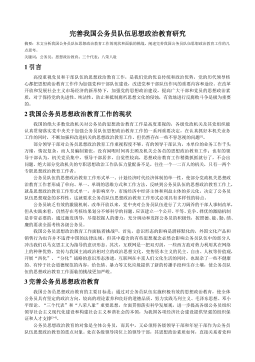
 2024-10-15 30
2024-10-15 30 -
在线社会网络中用户行为的实证分析与机制建模研究VIP免费
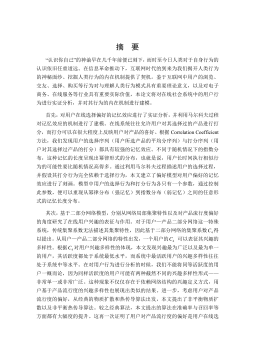
 2025-01-09 6
2025-01-09 6 -
智能优化方法对神经网络的改进及应用研究VIP免费
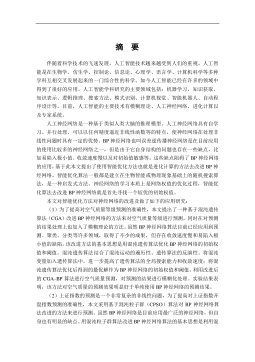
 2025-01-09 6
2025-01-09 6 -
鲜切哈密瓜保鲜技术研究VIP免费

 2025-01-09 8
2025-01-09 8 -
小城镇道路网级配方法及应用研究VIP免费
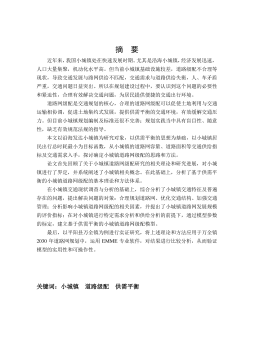
 2025-01-09 6
2025-01-09 6 -
医学信息集成测试系统的研究与实现VIP免费
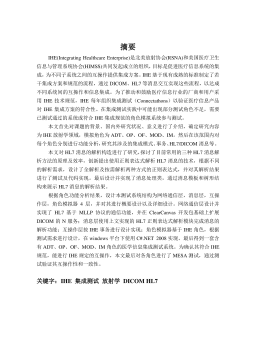
 2025-01-09 7
2025-01-09 7 -
余热驱动氨水吸收式制冷系统的理论及实验研究VIP免费
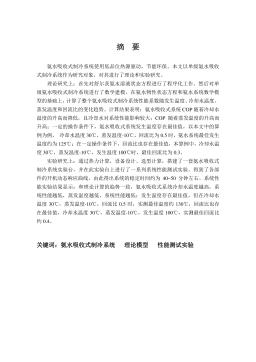
 2025-01-09 7
2025-01-09 7 -
喷雾降温技术适用性及热环境研究VIP免费
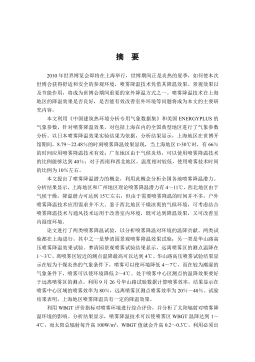
 2025-01-09 9
2025-01-09 9 -
收缩—扩张喷嘴的气泡雾化数值模拟VIP免费
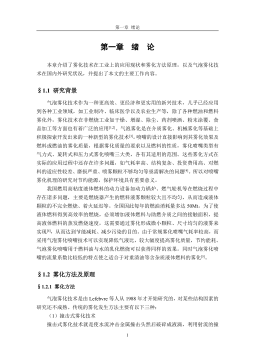
 2025-01-09 8
2025-01-09 8 -
支持供应链的工作流系统结构及其计划与调度的研究与应用VIP免费
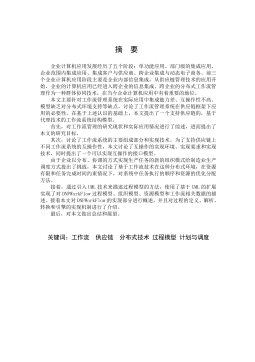
 2025-01-09 11
2025-01-09 11
作者:赵德峰
分类:高等教育资料
价格:15积分
属性:74 页
大小:3MB
格式:PDF
时间:2025-01-09
作者详情
相关内容
-

医学信息集成测试系统的研究与实现
分类:高等教育资料
时间:2025-01-09
标签:无
格式:PDF
价格:15 积分
-

余热驱动氨水吸收式制冷系统的理论及实验研究
分类:高等教育资料
时间:2025-01-09
标签:无
格式:PDF
价格:15 积分
-

喷雾降温技术适用性及热环境研究
分类:高等教育资料
时间:2025-01-09
标签:无
格式:PDF
价格:15 积分
-

收缩—扩张喷嘴的气泡雾化数值模拟
分类:高等教育资料
时间:2025-01-09
标签:无
格式:PDF
价格:15 积分
-

支持供应链的工作流系统结构及其计划与调度的研究与应用
分类:高等教育资料
时间:2025-01-09
标签:无
格式:PDF
价格:15 积分






